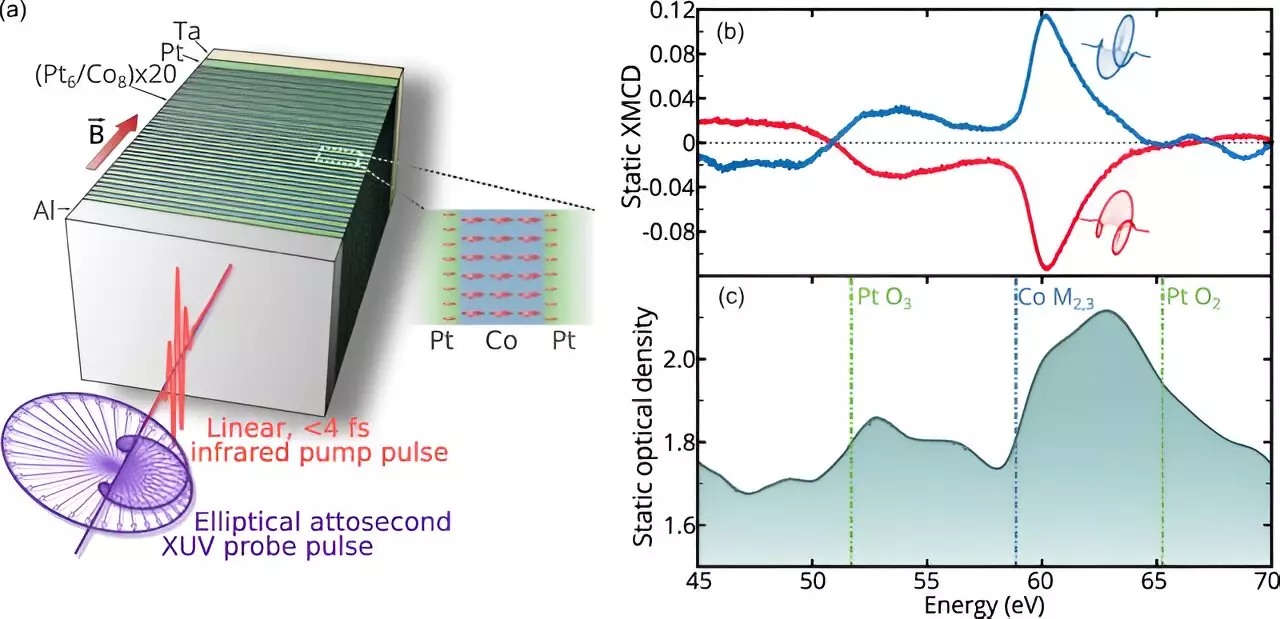In the domain of modern physics, particularly spintronics, the generation and manipulation of spin currents have emerged as focal areas of research. Spin currents, defined as flows of electrons organized by their spin orientation, possess the potential to revolutionize electronic devices by introducing a new paradigm of functionality and efficiency compared to conventional charge-based electronics. A recent study published in the esteemed journal Physical Review Letters by a collaborative international team of physicists has unveiled a groundbreaking method for directly generating these spin currents utilizing ultrashort laser pulses.
Traditionally, the generation of spin currents relied on indirect methods in which lasers would induce spin through mixed electron orientations. Such methods are fraught with inefficiencies, as they necessitate extensive filtering to extract a coherent spin direction from the generated electron population. The novelty of the recent study hinges upon its success in generating spin currents with aligned electron spins from the outset, thereby simplifying the process and enhancing efficiency. This was achieved by employing two laser types—one linearly polarized and another circularly polarized probe laser—to manipulate electron spins directly within a specially constructed target made of alternating layers of platinum and cobalt.
The experimental approach involved crafting a target block composed of 20 nanometer-thick layers that alternated between cobalt and platinum. Subsequently, a magnetic field was directed perpendicularly through this layered structure, aiding in the alignment of electron spins across both materials. This meticulous setup was critical, as it ensured that the electron spins were oriented uniformly before the application of laser pulses. The researchers then utilized short laser pulses to excite the electrons, followed by the strategic application of a circularly polarized probe laser. This combination of stimuli achieved rapid spin manipulation, reconfiguring the electron alignment within femtoseconds—a timescale quicker than any previous techniques had been able to promise.
The findings from this research hold profound implications for the advancement of electronic device technology. Faster electronic systems that utilize spin currents could potentially lead to remarkable enhancements in computing speeds and energy efficiency, which are critical parameters in an era striving for sustainability and low-power consumption. The experimental results were further bolstered by theoretical calculations, providing a corroborative foundation for the observed phenomena. Together, they contribute significantly to the understanding and application of spintronics, marking a pivotal step towards the realization of next-generation electronic devices.
As this research demonstrates, the intersection of laser technology and spintronic materials can pave the way for innovative solutions in electronic engineering. The ability to directly generate spin currents with aligned electron spins heralds a promising future for electrical systems, ultimately driving both their performance and sustainability. Looking ahead, further exploration into this direct method may yield even greater efficiencies and broader applications, cementing the role of spintronics in the forefront of technology.


Leave a Reply